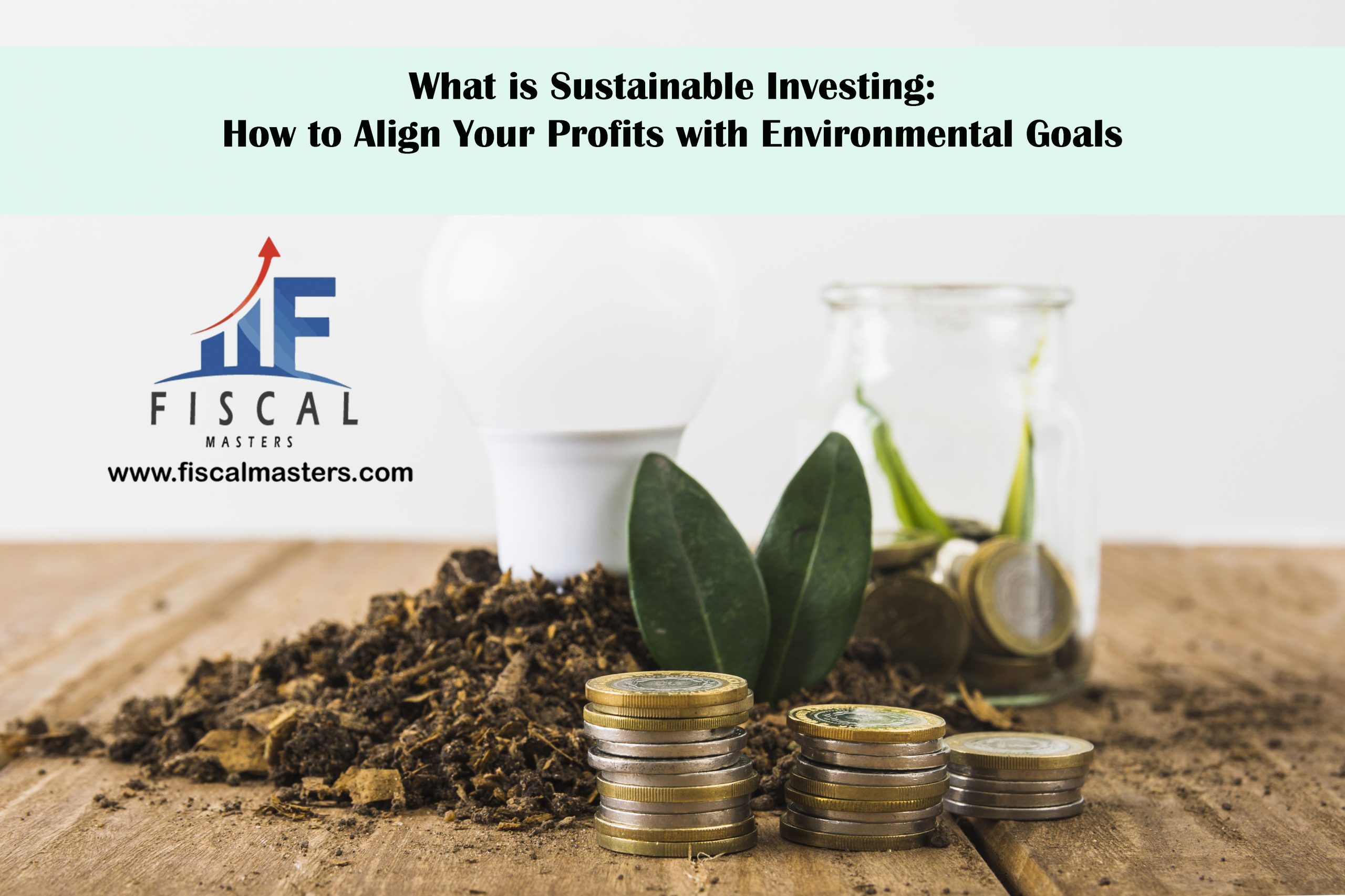Are you looking for options for investment that are sustainable? Selecting a sustainable investment option may sound good, but do you know what it means practically? If we look into past years, socially responsible investing took time. There were higher fees, fewer funds, and much more. However, these charges have dropped significantly, so people can look forward to investing. If you want to know more about sustainable investing, read on further.
Definition of Sustainable Investing
The other popular name for sustainable investing is socially responsible investing, green investing, or SRI, an investment approach that considers environmental, social, and governance (ESG) factors. Investors also consider the usual financial factors when proceeding with sustainable investing. The aim of this type of investment profile is the generation of positive and long-term returns. At the same, it also aims to create a positive impact towards a greener society and environment.
Read More: Understanding Crypto Wallets: How to Choose the Right Type to Manage your Digital Assets- July 2023
The fundamental principle of green investing involves integrating ESG (Environmental, Social, and Governance) criteria into the decisions making process and investment analysis. It means that the investors have to evaluate the companies and investment opportunities. The analysis factors include Climate-conscious investing, labor standards, human rights, usage of resources, and other factors.
Investors must look for companies that are highly involved in ESG practices. Moreover, they must also avoid companies that harm the environment.
Benefits of Sustainable Investing
One of the primary benefits of green investing is financial performance and risk management. According to a report published by morning star, companies with strong ESG practices outperform those that follow conventional practices.
When investors incorporate ESG (Environmental, Social, and Governance) criteria and investment decisions, they can identify companies that can perform better in the market. They can also decide which companies can adapt to the change in market dynamics. A proactive approach to risk management helps reduce the potential risk factors associated with environmental and social issues.
Read More: Prioritizing Debt Repayment: Strategies to Pay Off your Debt and Stay Afloat- July 2023
In another way, socially responsible investing also helps diversify investors’ portfolios. When someone invests in multiple sustainable asses, they can reduce their exposure to risk-prone sectors due to climate change. Ultimately helping to improve resilience and stability in the portfolio.

Investing in sustainable companies helps drive positive change in society and the environment. When investors allocate capital to companies, they prioritize sustainability over conventional ones.
Green investing helps in improving outcomes for the environment. It helps in reducing carbon emissions and waste pollution. As a result of this, companies also deploy resources into Renewable energy investments.
Potential Challenges of Sustainable Investing
One of the significant challenges in Sustainable finance is the need for more standardization for reporting ESG performance. The lack of consistent and comparable data makes it hard for investors to assess the sustainability practices of any company.
Some Companies have a higher potential to greenwash. In greenwashing, the companies create an image of sustainability, whereas, in reality, they do not follow such practices. Hence, undermining the effectiveness of sustainable investing.
Some investors argue that sustainable investing causes low financial returns or limits investment options. When investors exclude some companies based on ESG criteria, they may miss out on potential Profit with purpose.
Despite these challenges and criticism, sustainable investing is gaining popularity among investors who recognize the potential of green investment.
Types of Sustainable Investing
There are different methodologies of sustainable investing. The critical difference between these types is their approach and objectives. Investors can use these types depending on their investment objectives and financial goals.
- ESG (Environmental, social, and governance) criteria for investing
- Ethical investing
- Impact investing
- Low-carbon investing
- Socially responsible investing (SRI)
- Value-based investing
- Conscious investing
- Green Investing
What is the Sustainable Investing Strategy?
The strategy for sustainable investing can vastly vary. For some investors, it may be investing a defined amount monthly into an ESG fund. For another investor, it may consist of researching several companies to determine which company’s value aligns with the investor’s value.
Strategies for Aligning Profits with Environmental Goals
Different strategies provide investors with various approaches to help them align with their profits and environmental goals. We will discuss three methods you can implement in your financial investments. Incorporation of these strategies into investment decisions, individuals, and institutions can play a pivotal role in driving positive change and contributing to a more sustainable future.
Screening and Exclusionary Approaches
Screening and exclusionary approaches are one of the strategies to align profits with your environmental goals. In this approach, investors do not invest in companies that are involved in activities harmful to the environment. Some of these industries include fossil fuels, weapons, and tobacco manufacturing industries. With the exclusion of such types of companies, investors can only support practices consistent with their objectives and goals.
Read More: Understanding Credit Scores: How to Improve and Maintain a Good Credit Score- July 2023
There are two screening criteria: Negative measures involve avoiding industries, whereas positive critical means selecting companies based on ESG performance. Regardless of whichever criteria you choose to evaluate companies, it will help promote environmentally responsible practices.
Positive Selection and Impact Investment
The strategy of positive selection and impact investment focuses on searching for companies or projects that positively affect the environment. For this strategy, investors must identify companies at the forefront of implementing sustainable practices and renewable energy. Investors who invest in such companies will support and accelerate switching to a more sustainable economy.
Positive selection and impact investment are both related to one another. Impact investment helps to take positive selection one step ahead. It does so by targeting specific investments that generate financial returns along with measurable social and environmental benefits.
Impact investors seek investments that address pressing environmental challenges such as climate change, biodiversity loss, or water scarcity. These investments aim to deliver a positive impact and financial gains, demonstrating that profitability and sustainability can go hand in hand.
Engagement and Shareholder Activism
In this particular strategy, the investors use their ownership rights and influence to promote the companies to get involved in improving their environmental performance. Dialogues, meetings, and proxy voting are a few ways through which shareholders can engage with the companies. In these meetings, the shareholders or investors serve as an advocate for the betterment of the environment.

Efforts for engagement involve collaboration with other investors to get them on board to drive such initiatives. Joining hands with other shareholders helps drive the positive change that is the investor’s prime objective. Once an investor becomes a shareholder, they influence to make corporate decisions. Investors can also strive for transparency and more substantial ESG commitments in the company.
Steps That Will Help you Align Your Profits With Your Environmental Goals
Sustainable investing requires constant monitoring and review of performance. Staying informed about the developments in the field, its practices, and the amendments in regulations helps to ensure that your strategy is aligned with your environmental goals. Three steps can help you align your profits with your environmental goals. These steps help in making a positive impact through the positive investment decisions that you make.
Identification of Personal Values and Environmental Practices
Identification is the first step for someone who is looking for sustainable investment options. Start with identifying your values and the priorities you have in terms of your environment. Think about the specific environmental issues you must consider and their environmental impact.
Read More: Introduction to Cryptocurrency: The PROs and CONs Cryptocurrency Investing- June 2023
A few points to consider include climate change, biodiversity, waste management, and clean energy. These considerations will help you decide and ensure that your investment decisions align with your goals.

Research Sustainable Investment Options
After completion of step one of the process, you move on to conducting research thoroughly. The purpose of this research is the identification of sustainable investment options that are appropriate. When carrying out this research, look for companies that have integration between ESG factors and focus on environmental sustainability. Examples of a few options include mutual funds, green bonds, exchange-traded funds, and impact investment funds.
Read More: What Is Sustainable Investing?
Performance track record and transparency are the two environmental criteria that must be considered when evaluating. Along with this, the investment option that you select must also be in line with your specific goals in mind.
Look for Professional Advice
Making an assessment and deciding on appropriate options can be a complex procedure. Look for professional advice and guidance in case you need help. Hire a financial advisor who can provide the best suggestion according to their expertise. These advisors also help in understanding the different investment options. Often they will give you personalized recommendations based on your financial goals.
Conclusion
In conclusion, sustainable investing is a fundamental approach that helps integrate environmental and social factors with investment decisions. It helps understand the importance of generating positive financial returns impacting the environment.
By aligning your environmental goals with investment decisions, you can contribute to addressing global climatic issues such as resource depletion and unfair social practices. Recognizing such investors’ power can help shape the world’s future. It benefits the planet and offers competitive returns better than conventional investments.
Adding sustainable investing will help you to create a diverse investment profile. It is the best investment for both future and current generations. The future of sustainable investing is promising, and these practices will likely become a norm in the future.



